4 Ways To Foster Collaboration In Your Team
Collaboration is essential for the success of any team. It allows members to share ideas, combine their expertise, and work towards a shared goal.
In today's fast-paced and competitive business environment, fostering collaboration in your team is more important than ever. And although digital tools might help to create collaboration more effectively and even asynchronously, the basis remains a human effort in building trusting relationships and culture.
There are many steps leaders can take if collaboration is a priority. However, the foundation isn't built overnight. It requires culture, communication, goals, and opportunities. Here are my recommendations for tackling each of these aspects.
Build a positive and inclusive team culture.
Culture is at the heart of any organisation. It influences the environment that a team finds and, therefore, significantly impacts behaviours and decision-making. For example, in a toxic culture, people are more prone to avoid responsibility and pointing fingers and are generally less engaged.
So a positive and inclusive team culture is an essential component of collaboration. Leadership has to create an atmosphere where every team member feels valued and respected and where different perspectives and ideas are welcomed. In short: They have to ensure psychological safety.
Some of the potential actions a leader can take:
- Establish clear values and expectations for behaviour within the team to create a sense of shared purpose and ensure everyone is on the same page regarding how they should treat each other and work together.
- Encourage open communication and dialogue among team members to create a sense of trust and inclusion within the team.
- Provide opportunities to get to know each other personally as it builds stronger relationships and a sense of camaraderie within the team.
- Offer support and resources for team members to grow and develop to demonstrate a sense of investment in each other's success and a sense of belonging within the team.
- Lead by example and show vulnerability to prove to the other team members that you want a safe environment to share ideas, disagree, and grow.
Encourage open communication and dialogue among team members.
While culture is at the heart of collaboration, effective communication is crucial to business success. Unfortunately, we've all experienced miscommunication ruining an initially great idea or project.
Therefore, great collaboration requires open and honest communication among team members. Encourage your team to share their ideas, thoughts, and concerns—even if it means you may face pushback.
Some of the potential actions a leader can take:
- Create a safe and supportive environment where team members feel comfortable sharing their thoughts and ideas. It can involve setting ground rules for communication, like respecting each other's opinions and avoiding judgment or criticism.
- Encourage active listening and responsiveness among team members, which includes asking questions, seeking clarification, and providing feedback respectfully and constructively.
- Provide opportunities to have regular, open discussions about their work and ideas. You need to carve out dedicated time for team meetings or retrospectives.
- Be open and transparent in your own communication with team members. Sharing information about the team's goals, progress, and challenges and being open to feedback and suggestions from team members is essential.
Establish clear goals and expectations for your team.
Having a clear understanding of what your team is working towards can help to foster collaboration. When everyone knows the end goal, the team can work together and achieve it more effectively.
Some of the potential actions a leader can take:
- Implement a structured approach to goal-setting and expectation management. One potential framework might be Objectives & Key Results (OKR), which fosters self-leadership and agency.
- Ensure the team's goals are SMART, so specific, measurable, attainable, relevant, and time-bound to reduce the amount of uncertainty and different interpretations.
- Communicate the goals and expectations regularly. Goals and expectations should always be clearly stated, even in writing. It's also helpful to have frequent discussions to understand the goals and expectations to align everybody in the team.
- Monitor progress towards the goals and provide feedback and support to team members. Whether you're applying a framework like OKR or not, regular check-ins to discuss progress, challenges, and successes are vital for collaboration to improve constantly.
- Celebrate successes and achievements along the way. We tend to spend too much time on failures and miss out on adequately recognising our achievements. Carve out some time to celebrate success, as it's an important motivator.
Create opportunities for team members to work together.
Even with culture, goals, and communication all set, there must be appropriate opportunities for team members to collaborate, even more so if you're trying to break silos between different departments and teams.
While forcing teams and people to collaborate is risky, some nudging might be advised. However, it's also important not to judge success and productivity after the first trial in collaboration as the people require time to adjust and build trust.
Some of the potential actions a leader can take:
- Assign team members to work on projects that require collaboration (for example, with other teams). It provides a natural opportunity for team members to work together and coordinate their efforts.
- Encourage team members to seek out opportunities for collaboration on their own. It means you have to provide resources and support to identify those areas and communicate the added value of cooperation.
- Provide tools and resources to collaborate effectively. It could mean implementing technology solutions (such as collaboration software) that make it easier for team members to share ideas, documents, and other resources but also frameworks and templates for collaborative workshops and meetings.
- Recognise and reward collaboration. No matter the outcome of a specific collaborative effort, you should recognise collaboration to encourage it even more.
If you want to know more about the tool or need a facilitator, reach out for a first conversation: janoschtroehler.com
2022 Reflection
Looking back on a year full of changes and looking forward to new adventures.
Similar to last year, I'd like to take the opportunity to reflect on the past twelve months. While 2021 has also been challenging, it was a walk in the park compared to this year. 2022 brought some of the most challenging times in my life but also some of the most beautiful moments.
Before diving into my reflection, I encourage you to take some time to reflect as the end of the year approaches. Reflection is a powerful tool for gaining perspective and insight. It fosters self-awareness and focus—and you can use, for example, the end-of-year reflection tool by Hyper Island to create your personal reflection or deploy it at work with your team.
Challenges
No doubt, leaving the media industry after a decade brought a lot of uncertainty. In my heart, I still am (and probably will always be) a journalist. However, the first months of 2022 were exceptionally tough and brought me to the brink of burnout—and a point of no return: I had to quit. Until this day, I'm recovering from behaviour engrained in a limiting, political environment.
My Favourite Apps of 2022
Software applications shape how we work and define the foundation of our productivity. Here I share 7 apps and tools at the core of my tech stack.
As the end of the year approaches fast, the time for recaps and best-of lists is impending. So I thought I’d chime in and talk about seven of my favourite apps for my work and productivity.
Naturally, I won’t include any software I use in my regular job like the G Suite, Slack, Jira, or Confluence as they are given. Also, I don’t include any social media or content platform like YouTube, which brings a lot of value but isn’t much part of my workflow.
The seven products I’ll present revolve around content creation and distribution—from reading and learning, knowledge management and communication to editing and publishing. I hope that you discover an app that might also help your work. So here we go:
Refind
I wrote back in 2018 about how Refind snuck into my daily routine. Refind recommends a daily curation of content around customizable topics. Combining information from your social media, search, and personal interests, its algorithm rarely failed me. As a result, I find at least one or two exciting pieces per day that make me smarter.
I open the app every morning to check the recommended stories. I also save helpful pieces of content around the web and organise them in various folders to find them again later. Simply said: It‘s the go-to place for me to find, save, and repurpose content.
If you want to try Refind, use my invitation link below.
 Refind
Refind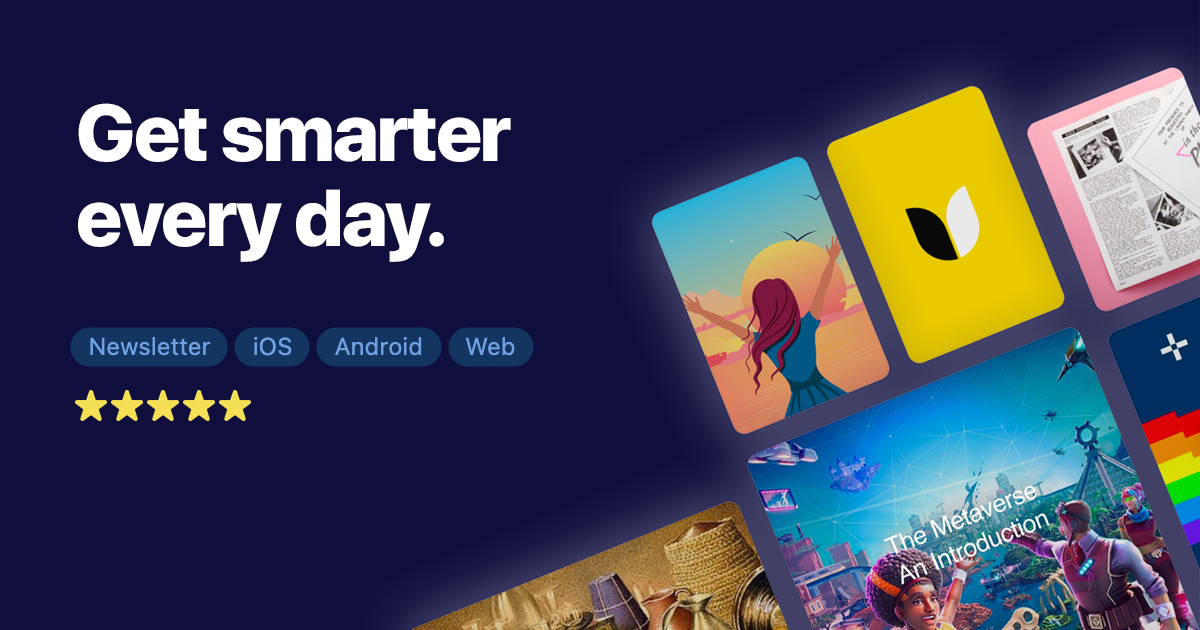
Hey
Email won‘t die, but it can also suck a little bit less. That‘s where Hey comes into play. I started using Hey in 2022 and quickly learned to love its features since it basically gives you a fresh start.
Hey is a domain host (you‘ll get an @hey.com address if you choose the personal plan) and email software. The inbox is divided into three tiers: The so-called Imbox, the feed, and the paper trail. The Imbox is your classic entry point with the added benefit that read emails disappear behind a customizable cover. The feed is where you direct all your newsletters to get a clean reading experience. And the paper trail is perfect for receipts and other automated stuff.
Whenever you get an email from someone you haven‘t interacted with yet, Hey asks you to screen it: Then you can decide in which tier the email and all future ones should land. The categorization can also be changed later on. It‘s the perfect feature to keep everything clean and tidy.
 HEY
HEY
Clay
Recommended by Niklaus Gerber, I started to try out Clay, a software that is something like a personal relationship management tool. It instantly replaced my standard contacts app as Clay creates a more holistic view of my network by connecting calendar, contacts, LinkedIn, Twitter, and Facebook into one gigantic list.
Although the setup took me quite a while with merging contacts, I now have a handy tool at hand to find experts thanks to the search functionality that scans the LinkedIn and Twitter bios and locations.
I also value the „reconnect“ feature very much. It automatically (or defined manually) reminds me to reach out to people I haven‘t been in touch with for a while.
Despite being a beneficial tool to maintain my personal and professional relationships, some things are missing: There‘s bad news for Android users as the app is currently only available on iOS. And while there are integrations with Google (email and calendar) and Apple (email, contacts, iMessage), there is none for Hey.
 Clay
Clay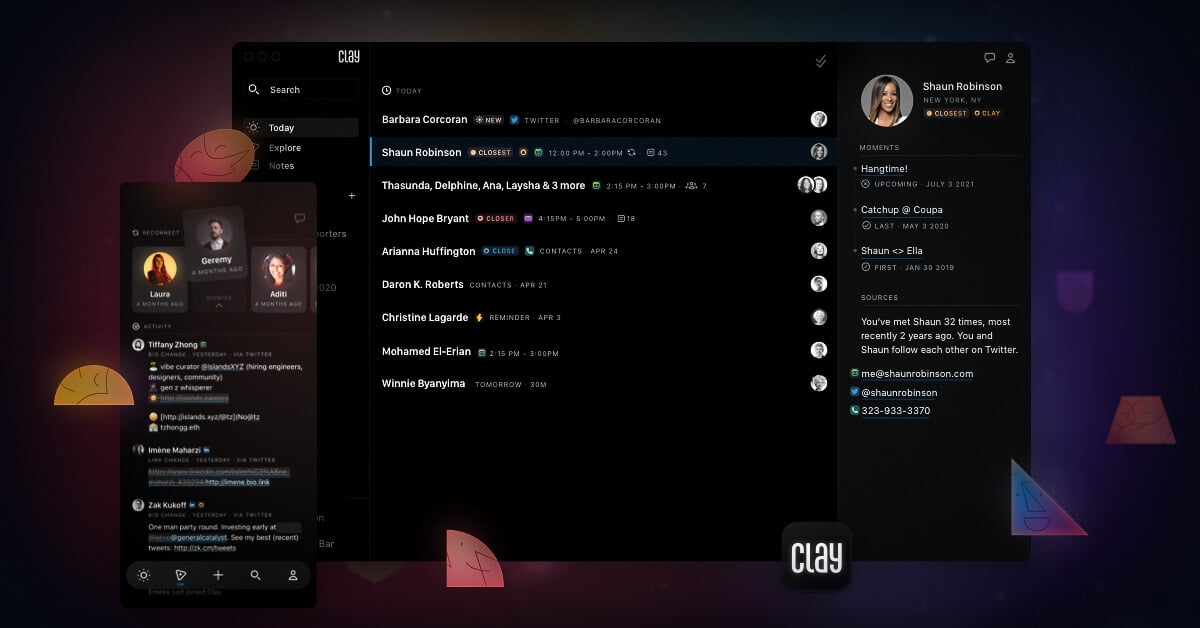
Readwise
Also a relatively new addition to my personal tech stack, Readwise is a great place to save and rediscover quotes from books or articles I‘ve read. With the daily review, you stumble again onto great wisdom again and again until you know them by heart.
I‘ve connected Readwise to Refind, so the highlights I make within Refind articles get fed into my Readwise account. Especially if I‘m writing a blog post, this feature becomes paramount to getting meaningful quotes to enrich the post.
Also, I regularly export the Readwise library to my Notion account to have a backup in my central workspace.
 Readwise
Readwise
Notion
productivity. I long struggled with the app, but when I finally put the effort in to set it up correctly, it quickly became the central hub for all activities: creativity, planning, writing, and project management.
I created two main entry points in my workspace: one for my music curation newsletter, Weekly5, and one called DigitalMind, where I manage this blog and newsletter, as well as other activities like personal projects, knowledge management, and budgets.
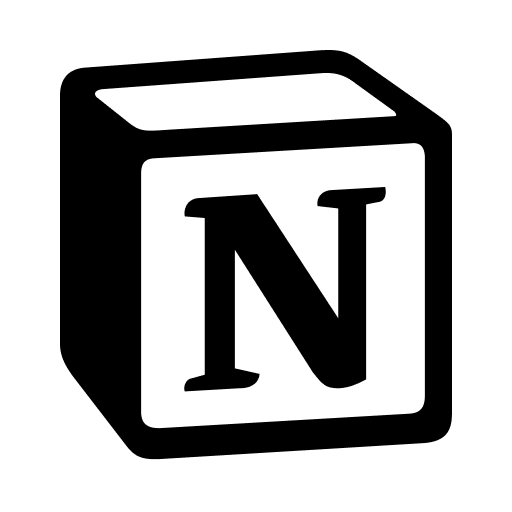 Notion
Notion
Grammarly
I've been using Grammarly for years now. The spell-checking and proofreading software became indispensable since I'm not a native English speaker. Its browser extension also helps me write correctly when I'm not in the editor.
Also nice: Thanks to Grammarly's desktop app, it proofreads my writing in Notion.
 Jeanette StockCo-founder ofVenture Out
Jeanette StockCo-founder ofVenture Out
Ghost
Finally, we come to publishing. I've worked with many different publishing software products: WordPress (which I still use for my website), Medium, Drupal, CUE, and other professional content management systems.
For newsletters, I've been using Mailchimp, Revue, and Substack. However, at the beginning of 2022, I started using Ghost after a recommendation by David Bauer. Since Ghost is an open-source, non-profit organisation, I find it a more sympathetic tool than Substack. In addition, instead of taking a cut from each paid subscription, Ghost can be either run self-hosted or hosted by Ghost itself for a yearly fee.
The editor is similar to Medium or Substack, so switching doesn't require much effort. And there are regularly valuable updates that improve the product immensely.

Elon Musk Is A Prime Example Of How Not To Lead
Leadership education just got a new worst-practice example for mass layoffs: Elon Musk’s Twitter.
Yes, it really happened: Elon Musk, the world's richest man, bought himself a new toy: Twitter. Forty-four billion dollars for a platform that never has been profitable. Suddenly, he became the new boss of 7500 employees globally.
Now, he's going to axe 50% of them in the worst way possible: via email.
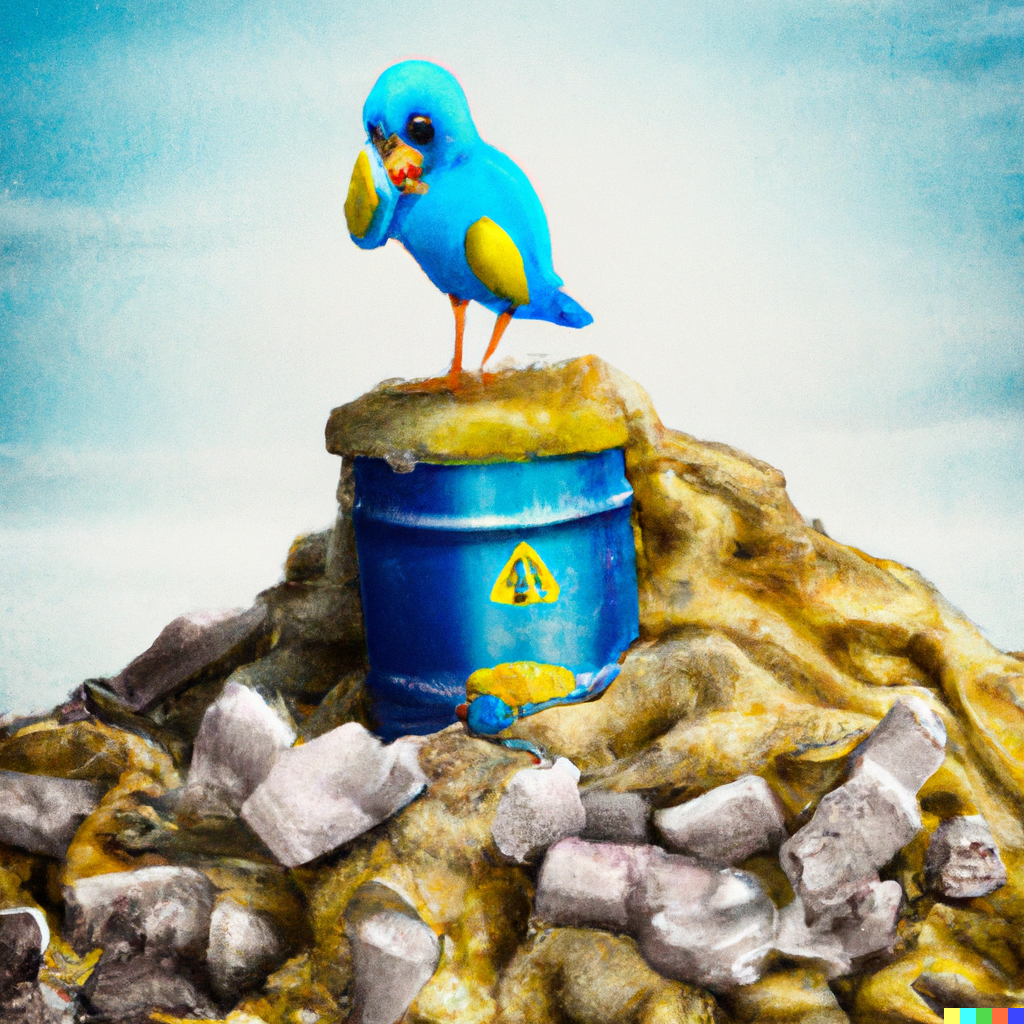
And it sure began on November 4. Here's the email that the employees received in advance:
Team,
In an effort to place Twitter on a healthy path, we will go through the difficult process of reducing our global workforce on Friday. We recognize that this will impact a number of individuals who have made valuable contributions to Twitter, but this action is unfortunately necessary to ensure the company's success moving forward.
Given the nature of our distributed workforce and our desire to inform impacted individuals as quickly as possible, communications for this process will take place via email. By 9AM PST on Friday Nov. 4th, everyone will receive an individual email with the subject line: Your Role at Twitter. Please check your email, including your spam folder.
If your employment is not impacted, you will receive a notification via your Twitter email.
If your employment is impacted, you will receive a notification with next steps via your personal email.
If you do not receive an email from twitter-hr@ by 5PM PST on Friday Nov. 4th, please email xxxxxxxx.
To help ensure the safety of each employee as well as Twitter systems and customer data, our offices will be temporarily closed and all badge access will be suspended. If you are in an office or on your way to an office, please return home.
We acknowledge this is an incredibly challenging experience to go through, whether or not you are impacted. Thank you for continuing to adhere to Twitter policies that prohibit you from discussing confidential company information on social media, with the press or elsewhere.
We are grateful for your contributions to Twitter and for your patience as we move through this process.
Thank you.
Twitter isn't the only tech company that recently announced layoffs. For example, Stripe, the payment solution provider, laid off 14% of its staff. But the way how they communicated was radically different. Here's an excerpt:
Most importantly, while this is definitely not the separation we would have wanted or imagined when we were making hiring decisions, we want everyone that is leaving to know that we care about you as former colleagues and appreciate everything you’ve done for Stripe. In our minds, you are valued alumni. (In service of that, we’re creating alumni.stripe.com email addresses for everyone departing, and we’re going to roll this out to all former employees in the months ahead.)
The situation for every Twitter employee who got the axe today is tragic. But also spare a thought about what the way of communication did to those who remain. Elon Musk makes it crystal clear:
- He doesn't care about you; he cares about the numbers.
- You could be next if the numbers don't satisfy him.
- There's no safety.
From the anonymous accounts we read in the articles published today (and probably shortly), it's evident that the work environment at Twitter is currently dominated by fear and toxicity. It's quite an impressive result for Musk after being only a week in charge.
Zero Empathy
There's no way around it: Twitter does face a business challenge. The company must be profitable and create compelling products and viable business models. However, from the outside, it sure looks like Musk has no clear ideas—besides his ridiculous spitballing with a fee for the blue verification checkmark.
Now, he has created a very hostile, toxic, and unsafe environment at the company.
How inspired might the remaining employees be after these actions? Will they be motivated to come up with great solutions? Or will they play it safe, try to keep their heads down, and not challenge Musk's ideas? I think we know the answer.
No, Elon Musk, which should now be obvious, is not a great example of leadership. He puts numbers before people and shows zero empathy towards his employees.
It's hardly a surprise if we think about how he already acted at Tesla. "Everyone at Tesla is required to spend a minimum of 40 hours in the office per week," he wrote in one of the emails, according to the BBC. "If you don't show up, we will assume you have resigned."
It will take a long time to rebuild internal trust within Twitter. Somehow, however, I doubt Musk is interested in doing so. The problem is that if there's no inner trust, especially if it's so publicly displayed, it's even harder to create general trust towards the company.
I'm pretty sure that the platform I came to love as a source of information, inspiration, and refreshing ideas will suffer severely. People in toxic environments are more likely to experience burnout/depression and get sick. The CDC estimates a cost of $36.4 billion annually because of employees missing work days.
High turnover is another sign of toxic company culture. SHRM estimates: "Over the past five years, the cost of turnover due to workplace culture exceeded $223 billion." So, a toxic environment affects the bottom line as productivity suffers because of less engagement and high turnover.
I'm wondering: How would anybody want to work for Twitter after seeing how Elon Musk handled this mass layoff?
Why I Love To Commute For 4 Hours
I deeply value the possibility of working from home. However, I also have no issue commuting for 4 hours a day. Here's why.
Suddenly, everything happened so quickly. I was just having brunch with some friends on Sunday when an urgent work email arrived. It was March 8, 2020. A couple of hours later, it was clear what we had to do: Grab our stuff from the office and stay at home.
The newsroom of Blick, where I used to work back then, went into lockdown a week earlier than the rest of Switzerland because of two suspected cases. So, I worked from home for the next three months with only a few exceptions. And my apartment remained the primary workplace for more than two years.
When the pandemic forced many workers to stay home, I already knew I could be highly effective. I worked from home before as a project manager at Blick in 2018 because the busy buzzing of an open-plan newsroom didn't help to focus on writing presentations and concepts. My boss was okay with it but said: "Don't tell anyone. It's actually not allowed to work from home."

But it wasn't until Covid-19 hit that I optimised my private office space and added helpful hardware and tools like a whiteboard or multiple monitors. Quickly, my workspace was better equipped than the actual office.
Moreover, I came to love the added lifetime without having to commute 90 minutes every day.
Why the hell would I ever go back?
How A Readme Improves Your Onboarding Process
Why you should consider writing a personal readme and a free template that you can use to get started.
Starting to work with a new team member is always a challenge. There's a great deal of uncertainty: What are the person's characteristics, values, and beliefs? What are their needs for effective collaboration? Do they have any quirks I should know and consider?
In fact, this level of uncertainty also applies to the new colleague: You can probably remember the queasy feeling in your stomach on your first day. And some of these questions might have raced through your mind as well.
But what if there's a way to eliminate some of the uncertainty and simultaneously create a psychologically safe environment?
What's A Personal Readme?
A personal readme is a living document that provides in-depth information about a co-worker. Initially, those readmes were thought of as a tool for managers—or as Forbes describes it: «Instead of new hires having to go through the trepidation of learning the things that upset a manager, the manager discloses what you need to know upfront. They can explain their philosophy, approach, expectations, and pet peeves, such as long PowerPoints, rambling at meetings, or failing to read emails promptly.»
Niklaus Geber defines it as follows: "The idea behind a management readme is to give your employees more context of how you work like a boss. It clarifies things that someone might feel insecure about asking a new boss."
The key to a successful readme, however, is the exercise in vulnerability—an essential leadership skill. It requires honest reflection and openness to constructive (and anonymous) feedback to improve the readme further and discover one's blind spots.
Therefore, a manager who deploys a personal readme might also contribute to a psychologically safe environment because he openly communicates his weaknesses, flaws, and quirks to his team. «Sharing such a document with an employee also shows vulnerability which helps to build trust. Trust is the start of one significant working relationship,» explains Niklaus Gerber.
I first heard of the idea from Rouven, a fellow Hyper Island alumni. Intrigued by the concept, it was David Bauer's user manual that finally made me write my own readme.
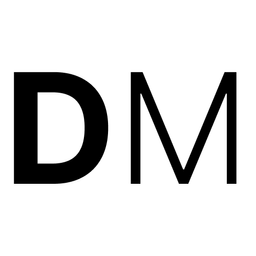 Janosch Troehler • DigitalMindJanosch Troehler
Janosch Troehler • DigitalMindJanosch Troehler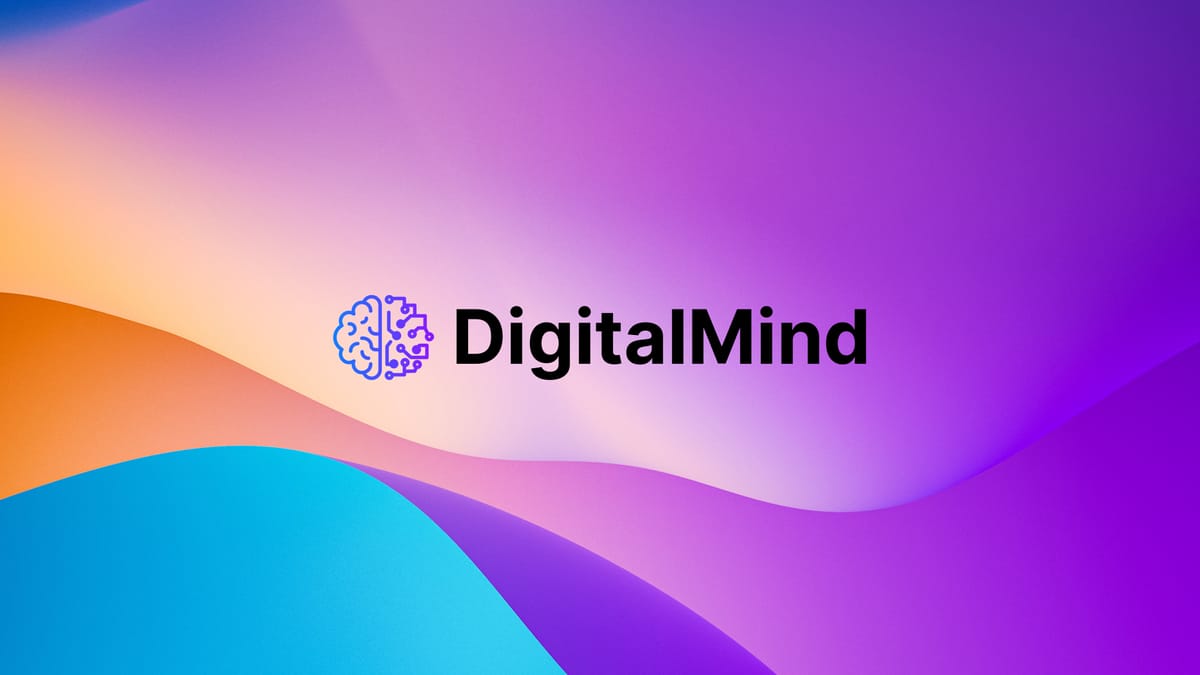
Although I wrote it six months ago, I didn't share it for quite some time because I didn't feel safe enough at the time. The environment has to be facilitated by leadership, and that's also the reason why personal readmes are perceived as a manager's tool.
Creating A Healthy Culture
However, reasonable arguments exist for deploying readmes as a team-spanning tool and making it part of the onboarding process. I spoke to Niklaus Gerber about his experiences:
Everyone joining my team must write and share his manual with the team. This was beneficial to everyone involved. Taking the time to put it into long form how you want to be treated and what other humans should work about you is a good reflection exercise. It also helped the rest of the team to understand how each worked.
Gerber reckons that the readmes work well because you're walking the talk: "You are open, vulnerable, and transparent from the start. This sets a healthy tone within the team and it makes it easy for others to join in."
But Gerber also agrees that managers must lead by example: "Showing them mine first and giving them some direction helped a lot. Overall feedback was always, that it was helpful to read mine and that it was a good exercise to reflect on what's important to them."
Furthermore, he told me that so far, only one team member who was at the company before he joined refused to write a readme. However, after new members joined and did it as part of their onboarding, he joined in.
My Experience With The Readme
I finally shared my readme when I joined Zeilenwerk in August—despite I was the only one to have a readme. I wouldn't recommend it in a traditional company. However, Zeilenwerk, as a self-organised company with an open and transparent culture, allowed it regardless.
In preparation for this post, I asked for feedback from some of my co-workers. UX/UI designer Andrea Möhl wrote: "Through your readme, I learned important things about you and important things to you before I even started working with you. I think it anticipates a certain surprise effect and room for interpretation that exists when you get to know someone without any prior knowledge."
And Andreas Keller, one of our developers, found the idea refreshing: "After reading it, I immediately had the feeling that I knew you a bit. I learned about the things that you value and the things that might trigger you. I also think the readme has a personal benefit because it helps you to find out what values and ways of working together are important to you."
Conclusion & A Free Template
Based on the feedback I got as well as the experiences others had with this tool, I can wholeheartedly recommend the personal readme as a tool. It can serve as a structure for your private reflection that hasn't to be shared with anyone else.
But it's an effective tool for leaders to improve the onboarding process, create a safe environment, and reduce uncertainties and anxieties. If you are in a leadership position, I suggest you try it. And if you think that your superior might be open to the idea, you can always recommend the concept.
To make the entry hurdles as low as possible, I created a free readme template that you can use as is or adapt to your personal needs. I highly recommend reading some existing ones to get a feeling for the concept.
Trigger Warnings Don‘t Work: Should The News Stop Using Them?
A recent meta-analysis looked at the research around trigger warnings. The conclusion: They don't work.
This post contains information that might disturb you.
Trigger and content warnings like the one above have become more frequent in the last few years. Regarded by many as an effective tool to prevent people with traumata from reliving their pain and anxieties, they indeed seem well-intended.
But here's the problem: Trigger warnings don't work.
I recently stumbled over this meta-analysis that collected the findings of several studies on the effectiveness of trigger and content warnings. The research's findings are surprising:
This meta-analytic review suggests that trigger warnings–statements that alert viewers to material containing distressing themes related to past experiences–do not help people to: reduce the negative emotions felt when viewing material, avoid potentially distressing material, or improve the learning/understanding of that material.
However, trigger warnings make people feel anxious prior to viewing material. Overall, results suggest that trigger warnings in their current form are not beneficial, and may instead lead to a risk of emotional harm.
Phew, that's some news.
Categorising Contexts
There are different kinds of settings and types of warnings that could (maybe should) be distinguished. Philip N. Cohen, a sociologist at the University of Maryland, suggests the following categories on his blog:
- Warnings of content likely to be disturbing to many people in the audience.
- Warnings of content that may trigger post-traumatic stress responses.
- Warnings of obnoxious, offensive, disagreeable, or dangerous ideas.
Cohen also recommends on when to use warnings, and it's only the first category. In cases of violent imagery, for example, he thinks that "in these cases, a warning of the impending discourse is something like common courtesy."
Nevertheless, Cohen also nuances his suggestion as there are settings where content warnings seem optional:
A horror film can be expected to surprise you with specific acts of violence, but you know something bad is coming; a sociology class on racial inequality should be expected to include discussions of lynching, a history documentary on war is expected to show people being killed.
What About The News Media?
In line with Philip N. Cohen's argument, the news is a context where sensitive topics occur. In my years as a journalist, I've experienced many debates around content warnings and notes. In every job, there has been at least one discussion about whether we can show specific graphic images or not.
Especially cautiously treated, for example, are reports about suicide. In the rare cases when reporting is done, the stories are accompanied by a textbox that provides information about organisations that offer help.
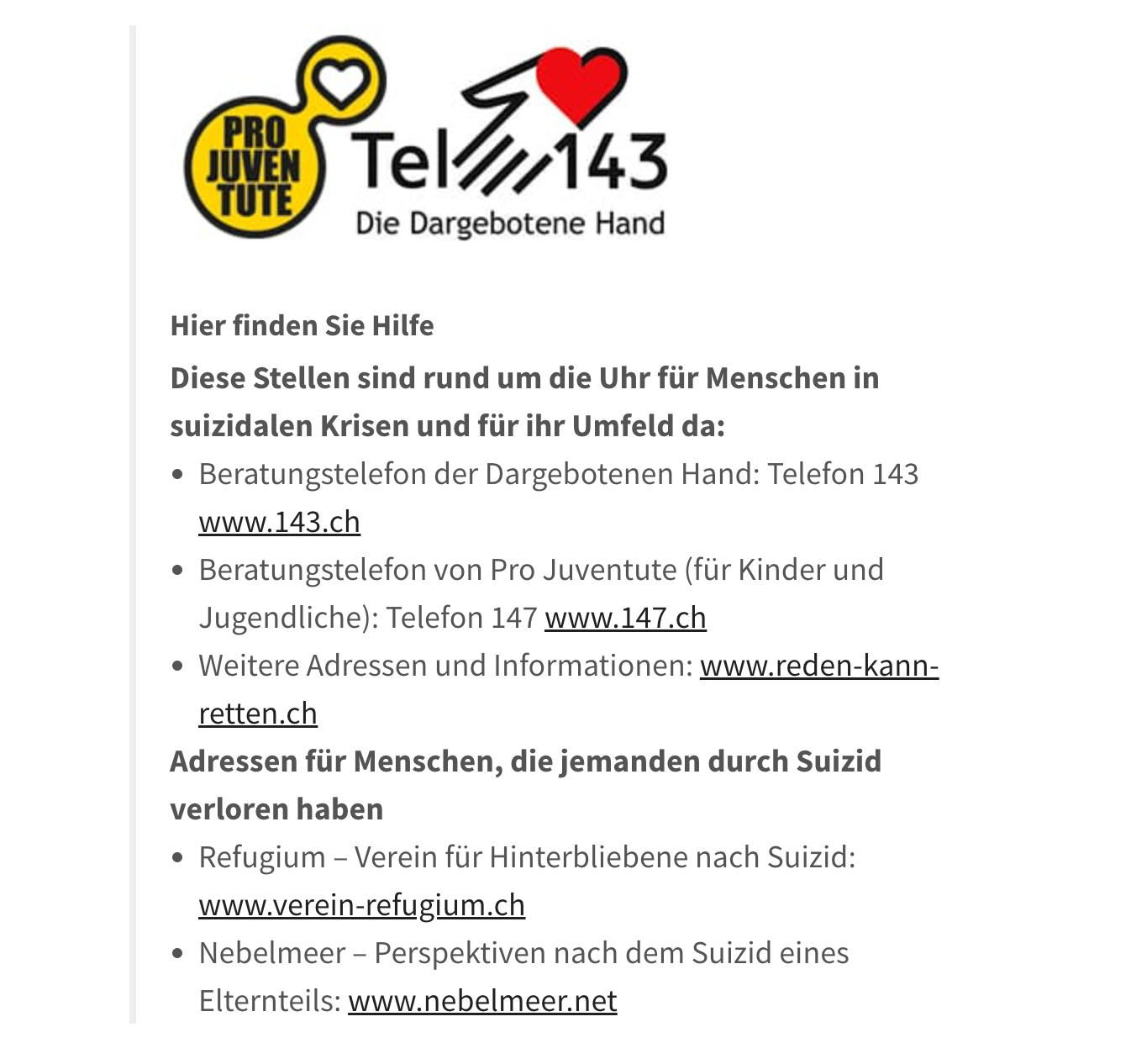
These media ethics discussions are essential and should be held more publicly rather than contained in the newsrooms. The Swiss Press Council has many directives that specifically address war, crimes, and suicide reporting.
Despite all existing guardrails, the meta-analysis' findings lead to the simple question:
Should The News Get Rid Of Trigger Warnings?
First, we have to cover some basics.
On one side, you could argue that reality isn't all rainbows and unicorns. The media has to report accurately, and violence, death, crime, and war are a part of it.
Moreover, shocking images can trigger political or societal action and raise awareness drastically. Here, the photos of refugee boy Alan Kurdi and, more recently, images from the war in Ukraine come to mind.
 The GuardianHelena Smith
The GuardianHelena Smith
On the other side, news media also have to report responsibly. They are responsible for protecting the dignity of the people depicted and their audiences, at least to a certain point. Simply publishing graphic content for the spectacle's sake is blatant sensationalism.
"We are evolutionarily wired to screen for and anticipate danger, which is why keeping our fingers on the pulse of bad news may trick us into feeling more prepared."
However, Ahrends adds that the feelings of fear, sadness, and anger triggered by negative headlines can keep people stuck in a "pattern of frequent monitoring," leading to worse moods and more anxious scrolling—also dubbed "doomscrolling".
However, as the research suggests, placing a trigger warning in front of a story about rape or domestic violence doesn't prevent victims from reliving their horrible experiences.
And putting content warnings or blurring graphic images often seems like a fig leave to avoid the necessary debate around what news should and shouldn't show.
It also remains true that more and more people avoid the news entirely because of its negativity. They feel that, as described in the side note above, it impacts their mental well-being. They avoid the context that might trigger anxiety and distress, which can be interpreted as responsible behaviour. The Digital News Report 2022 found:
The proportion of news consumers who say they avoid news, often or sometimes, has increased sharply across countries. This type of selective avoidance has doubled in both Brazil (54%) and the UK (46%) over the last five years, with many respondents saying news has a negative effect on their mood.
But if people avoid journalism because of its negativity, it cannot provide its societal function of informing the people and enabling democratic discourse. So yes, the news should probably get rid of trigger warnings. First, however, newsrooms need solutions to create an environment that people aren't avoiding.
Alternative offerings like the photo-free reporting on the war in Ukraine by Swiss news website "Watson" could be a possible step.
Let me know your thoughts in a comment below or reply to the email.
Quiet Quitting: The Sign Of A Broken Relationship
How can we prevent the phenomenon to spread wider?
Since a TikTok video went viral, there's an ongoing discussion around the phenomenon of quiet quitting. The simple definition of quiet quitting: Employees only do the bare minimum of their job description—not more to excel, not too less to give the company a reason to let them go.
Some voices, however, object to the term 'quiet quitting'. For example, Ed Zitron told NPR: "The term is so offensive because it suggests that people that do their work have somehow quit their job, framing workers as some sort of villain in an equation where they're doing exactly what they were told."
In many ways, quiet quitting can be seen as a counter-movement to the notion that work dominates more and more of our lives.
Quiet Quitting Is A Warning Sign
Quiet quitting is something like the little sister of the Great Resignation, but the reasons behind the behaviour might be similar. Michelle Hay, GPO of Sedgwick, told the Washington Post: "It speaks to the tired and frustrated feeling that many are experiencing on the tail end of the pandemic. People are reassessing their priorities, and social disconnection can be part of this shift."
The quick succession of the Great Resignation and quiet quitting certainly points towards a significant shift in the perception of work—in the Western hemisphere, at least. In addition, the Covid-19 pandemic accelerated the implementation of remote work, potentially leading to more flexibility between work and private life.
However, simultaneously, the pivot to a fully or partially remote company culture is still an ongoing transformation accompanied by trial and error and a great deal of uncertainty. A recent study found that remote workers still waste up to 67 minutes daily being digitally present.
The reason for an employee to engage in quiet quitting might be circumstantial and highly individual. At the same time, the broad reception of the subject also points toward systemic challenges for companies. It's a warning sign.
The Impact Is Yet Unknown
On the other side of the debate stand those concerned about companies' successes and general economic productivity. USA Today paints an almost doomsday-like scenario, suggesting that quiet quitting is already impacting the US economy and also connecting it to inflation. However, the possible impact of quiet quitting cannot yet be fully perceived.
Others see quiet quitting just as yet another proof that younger generations simply lack the resilience to persist in the harsh economic environment. They blame the weak employees who can't endure hard times.
Nuanced opinions are unfortunately rarer, with dogmatism rampant on both sides. Nevertheless, some comments try to find a middle ground. "What I object to is the 'quiet' nature of the movement, when what we need right now is an assertive and noisy discussion of the appropriate boundaries between our home and working lives," writes Jessica Irvin in the Sidney Morning Herald.
Nilufer Ahmed also suggests that quiet quitting "can also help to separate your self-worth from work" and mitigate the risk of mental health issues which also benefits the employers.
Indeed, quiet quitting shows two significant short-comings by both companies and employees:
- Companies still don't know how to engage and retain their employees sustainably.
- Employees demonstrate short-term and tactical thinking about work.
Companies Need To Learn
While the Great Resignation is still in full swing, quiet quitting is but an additional challenge for a company's leadership. As quiet quitting is also prevalent amongst highly skilled employees, employers need to expand their toolkit for motivating their staff and investing in culture. One crucial step is acknowledging that workers are human beings with many aspects that might impact their performance. That means starting a dialogue and actively managing expectations is critical for the transformation.
A deeper insight into the current state of hiring and possible strategies provides in this extensive report by McKinsey. Their conclusion is quite clear:
"Our research identified distinct pools of workers with varied workplace priorities. Their differences show that employers have to take a multifaceted approach to attract and retain talent."
While most employees hope to find a higher-paying job, according to a broad survey by PwC, many participants mention other factors:
- Wanting a fulfilling job (69%)
- Wanting to truly be themselves at work (66%)
- being able to choose where they work (47%)
Furthermore, I've already described the three key drivers of what motivates us as proposed by Daniel Pink:
- Autonomy
Our desire to be self-directed. It increases engagement over compliance. - Mastery
The urge to get better skilled. - Purpose
The desire to do something that has meaning and is important.
Jobs requiring only a tiny amount of cognitive skill and creativity are not susceptible to traditional carrots and sticks methods; the opposite is true: Performance gets worse.
Employees Need To Become Strategic
On the other side of the aisle are the quiet quitters who are as stubborn as old-fashioned managers.
Yes, the intention behind quiet quitting is definitely a legitimate one: Seeking a fairer balance between work and private life is necessary, and the ever-increasing creep of work into the personal space through digital technologies is concerning.
Of course, bending over backwards isn't a great idea, and if you find yourself in a toxic environment, actually quitting your job is probably a better way.
However, as Jessica Irvin states, the quiet nature of this trend isn't improving the situation either. Instead of starting an open dialogue inside the company, they exclude themselves as an active part of the solution and create the expectation that it's only the employer's responsibility.
Quiet quitting might also hurt a person's career: Someone who only delivers the minimum is less likely to get promoted, receive a raise, be part of challenging new projects, or get a favourable recommendation when leaving the company on good terms. If we think about romantic relationships: Would you invest time and energy in a partner that seems disengaged? Probably not for long.
It is, therefore, relatively short-term and tactical thinking, improving the individual and immediate situation but not accounting for a long-term career strategy.
Relationships need two to work
The employer-employee relationship is like any other: It's a two-way stream of expectation management that requires an honest and ongoing discussion.
Sometimes, the company needs overtime and additional effort to finish a big project or meet customers' demands. Other times, an employee cannot handle an additional workload because of family matters or other personal issues. The key is communicating these contradicting needs and expectations early on and implementing clear rules and rewards based on meeting them.
Ultimately, both sides can benefit heavily from increased engagement and communication: The company strengthens its resilience while employees have opportunities for personal growth, new challenges, career planning, and work-life balance.